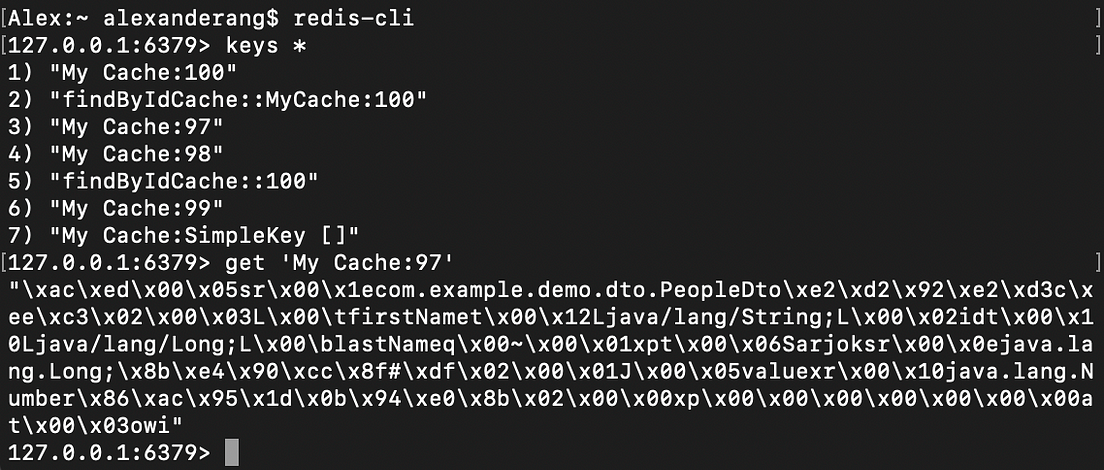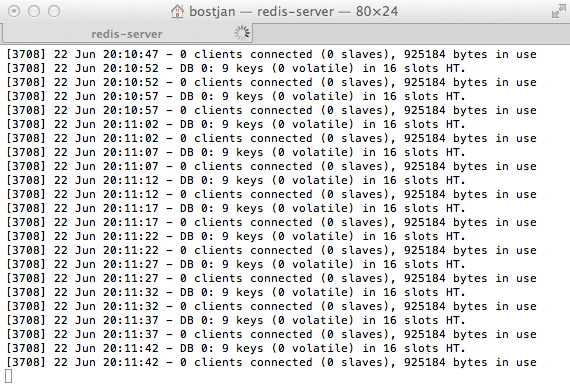

- #INSTALL REDIS OSX HOW TO#
- #INSTALL REDIS OSX INSTALL#
- #INSTALL REDIS OSX CODE#
- #INSTALL REDIS OSX DOWNLOAD#
At this point, you can test if your building has worked correctly by typing make test, but this is an optional step. Io web site, or you can alternatively use this special URL that always points to the latest stable Redis version, that is, http: / download.
#INSTALL REDIS OSX DOWNLOAD#
You can either download the latest Redis tar ball from Redis. Installing it using package manager of your Linux distribution is somewhat discouraging as the usually available version is not the latest. The suggested way of installing Redis is compiling it from sources as Redis has no dependencies other than working GCC compiler and libc. Find out what to read next to understand more about Redis. Reading this document will help you: download and compile Redis to start hacking. In redis-cli, enter the commands:ġ27.0.0.1:9979> EXAMPLE.HGETSET foo bar bazġ27.0.0.1:9979> EXAMPLE.This is a quick start document that targets people without prior experience with Redis.

While the debugger is running a copy of Redis, open up a Terminal and run the redis-cli program.
#INSTALL REDIS OSX CODE#
You can put breakpoints into your module’s code and watch Redis execute the module. This will launch a copy of Redis with your new module loaded. Use the standard less compilation problem matcher. Show the output window only if unrecognized errors occur. usr/local/bin/redis-4.0.6/bin/redis-server –loadmodule. To run the example, you need to launch the command
#INSTALL REDIS OSX HOW TO#
The tasks.json file will tell Visual Studio Code how to run the make command. We need to create JSON-based configuration files that tell Visual Studio Code how to build the application and how to run/debug the application. Open the main directory that the Module SDK is in. It will also build the shared library ( module.so) that is the custom module that you will load into Redis. It also builds the example that comes with the Redis Module SDK. This will build the single library ( librmutil.a) that you need to link your custom modules with. In the Terminal, go to the root directory of the Redis Module SDK, and just enter the command (Change the “void*” to “struct sdshdr#T*” in order to silence the Mac’s gcc compiler) #define SDS_HDR_VAR(T,s) struct sdshdr#T *sh = (struct sdshdr#T*)((s)-(sizeof(struct sdshdr#T))) Then enter the commandĪfter the source code is downloaded, edit the file rmutil/sds.h and change line 82 to In a Terminal window, navigate to the directory where you want the Git repo to be downloaded to.
#INSTALL REDIS OSX INSTALL#
It’s helpful to install the official Microsoft C/C++ extension.Ĭlone the Git repo for the Redis Module SDK. Open up a terminal and just enter the command

Make sure that the Gnu gcc compiler is installed on the Mac. For example, it does not yet have an API that supports SET-based functions. Note that the Redis Module SDK is still under development. The example shown below comes right out of the Redis Module SDK. I have attempted to document the process of writing a Redis module using gcc and using Visual Studio Code as my development environment. This shared library can be loaded into Redis when Redis is first started or can be loaded dynamically into an already-running instance of Redis. (Redis for Windows is only supported up until Redis 3.2.) Your Redis module must be a Unix shared library. Since Redis 4.x is only available on Unix-based systems, you need to write your Redis modules on a Unix-like system such as MacOS and use compilers like gcc. You can extend the functionality of your Redis 4.x installation by writing custom modules in C using the Redis Module SDK.


 0 kommentar(er)
0 kommentar(er)
